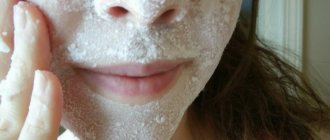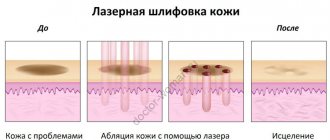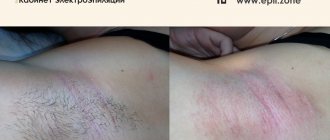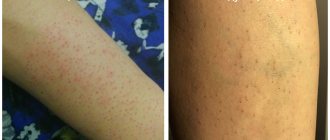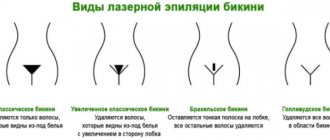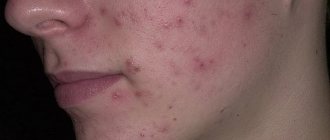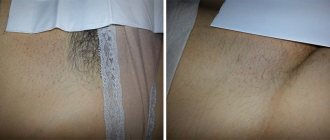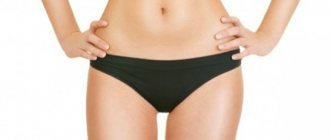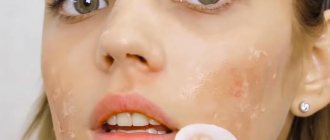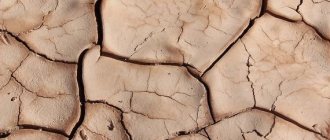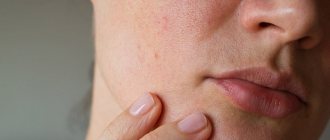Every day for men all over the world begins with shaving. Day after day, week after week, year after year, this procedure is repeated, and it seems that we should all master it perfectly.
But for various reasons this is not the case: if you look closely, in the subway, at work, and on the streets every day you can meet men with redness on their chins. “A fighter must overcome hardships and hardships” - so we sometimes overcome instead of thinking and reading useful advice. Anyone who shaves is not at all doomed to skin irritation. Our task is to understand what can be corrected in our daily ritual so that this problem never arises again.
First, it’s worth understanding what irritation actually is. This is a set of microtraumas to the skin surface caused by suboptimal shaving regimen. Ideally, when shaving with a machine, the blade passes exactly over the surface of the skin, carefully cutting off all the hairs without touching the epidermis. To do this, the blade must be sharp, its suspension must be adaptive to the micro-irregularities of the skin, and between them there must be a lubricating layer that facilitates friction.
Based on this, it is obvious that it is during the shaving process that can go wrong. If the blade is not sharp enough, if the razor itself is too “oaky,” if the layer of foam or shaving gel on the face does not provide lubrication, the same irritation, also known as redness, may appear on the skin after a short time. Accompanied by unpleasant itching and irritation in a different sense. Another reason for failures when shaving with a machine is the movements themselves: those who do not “stroking”, but “scrape” their face, are much more likely to face consequences.
Causes of irritation on the face after shaving
The most common mistakes men make that lead to skin damage and irritation are:
- lack of proper preparation before shaving;
- using a razor with dull blades;
- poor skin fixation;
- movements against hair growth;
- use of inappropriate products during and after the procedure.
If you do not steam your face enough and soften the hairs before shaving, the blade will not glide well across your face. In this case, some areas of the skin are injured, while in others the hair is not cut off carefully enough, which is why the movements have to be repeated, further irritating the skin.
Low-quality shaving foam, as well as a razor with old blades, have a similar effect. The more movements you have to make to achieve smooth skin, the higher the risk of redness of the facial skin in men and the appearance of rashes.
The technique of the procedure also plays a significant role among the causes of irritation. Insufficient fixation of the mobile skin of the cheeks leads to the appearance of microtraumas and cuts into which bacteria penetrate, which can cause acne and even furunculosis. Shaving too often is also harmful, as hair that has not had time to grow back is cut off again and grows into the skin.
Use a quality razor.
Some men rarely change their razor blades. Dull blades are one of the factors causing irritation. Dull blades do not cut hair, but tear it out. The advice is simple, do not use dull blades.
The problem with machines with 3 and 5 blades is the hairs that get stuck between them. this can also cause irritation. This problem can be solved simply by starting to use a machine with a double-edged blade. In some cases, this will help avoid the problem.
Using a safety razor is cost-effective, because the blades cost pennies. However, the shaving technique is somewhat different, so you will have to relearn.
How to avoid irritation on your face after shaving?
Experienced beard groomers recommend shaving your face immediately after a hot shower. Pre-steaming allows you to soften and lift the hairs, make the skin more elastic for the blade to glide evenly and open the pores for better penetration of protective products.
If you can't take a shower, to prevent irritation on your face after shaving, you can wash your face several times with warm water. It doesn't hurt to use a cleansing foam to remove dirt and exfoliated skin cells.
Do you know how to shave?
How well do you know how to shave? The question is very strange, since according to most people, it is enough to buy a razor in a supermarket and some shaving foam for 100 rubles. But do you know what movements and in what direction you should shave? What's the difference between a classic safety razor, a 3-blade razor and a straight razor? What water temperature makes for a more comfortable shave? What creams or lotions help with shaving? Today we will give answers to these and many other questions so that you are not left with any “blank spots” in your knowledge about the culture of men’s shaving.
Just because you bought a shaving razor and foam doesn't mean you know how to shave!
Choosing a shaving product
If in the last century men were forced to shave using regular soap, today a wide range of pre-shave products are offered, applied before shaving:
- foam;
- gels;
- cream;
- oils
The use of special products allows you to remove irritation on the face after shaving due to the special consistency and additional components in the composition. For example, gels are often made with a silicone base, which ensures uniform, smooth glide. Triclosan is often added to the foam, which has an antibacterial effect and prevents microbes from penetrating into microcracks and cuts.
Due to its airy consistency, applying foam before shaving helps to further lift the hairs above the surface of the skin. This effect increases the likelihood of cutting the hair the first time without excessive pressure and trauma to the skin.
However, standard foams and gels are not suitable for everyone. Foam tends to dry out the skin, and the gel clogs and quickly ruins the blade. In this case, you can use professional oil, which is used for shaving in barbershops. Just like classic products, it softens the bristles, making the hairs more pliable, while moisturizing the skin and not damaging the instrument.
Preparing the skin for shaving
The hair on any man's face is thicker and thicker than on other areas, and it is especially important to soften it as much as possible before shaving to reduce the number of passes with the razor. The stiffer your stubble, the more attention you need to pay to this stage.
The easiest way is to take a shower or bath just before shaving. Hot water will steam the skin and soften the hair. You can replace the shower with a hot compress: soak a soft towel in hot water, wring it out well and press it to your face for a few minutes, trying to warm up the entire area of the future shaving.
When shaving, keep the bathroom warm and humid, and avoid drafts.
And in any case, before shaving, the skin should be clean: wash thoroughly, choose special products or soap for the face, they are softer and do not dry out delicate skin.
A few minutes before shaving, apply a little of your shaving product - soap or cream - to your face: its components, which moisturize and protect the skin, will prepare your face for shaving. There are also special pre-shave products (“before shaving”), and if you have particularly hard stubble or sensitive skin, pay attention to them.
Tool selection
Despite the successful advertising promotion of Gilette type razors, they are more likely than others to cause redness and inflammation of the facial skin. In order to remove irritation after shaving, it is better for a man to use classic T-shaped razors or a shaver that resembles a straight razor.
Although reusable razors with 5-6 blades in a cartridge allow you to shave quickly without the risk of injury, they also have significant disadvantages:
- severely irritate the skin due to repeated exposure;
- tightly spaced blades are difficult to rinse thoroughly;
- reusable blades accumulate bacteria, which increases the risk of purulent acne after shaving.
Classic T-type razors require more time to remove hair, but do not cause irritation after shaving on men's faces due to the single blade. They are also much more hygienic, because... For each new procedure, a new disposable blade is used.
Use a good cream.
Quality shaving creams with high levels of moisturizing and lubricating ingredients retain moisture and lift hair into an upright position. Good creams create a thick foam consisting of tiny bubbles. Foam provides the best lubrication between the skin and the razor, preventing the blade from injuring it.
After you have applied the thick foam, it is advisable to wait at least 1 minute and let it absorb.
Of course, there is an option to use ready-made foam and not bother with preparing foam from cream. But the finished foam is definitely worse than any shaving cream or soap. Cheap
option is a terrifying cocktail of chemical components of dubious quality. Do not be fooled by the assurances of marketers and advertising; good products do not need advertising; people learn about them from recommendations or in good barbershops.
Correct shaving technique
Regarding the technique of the procedure itself, experts recommend making the first movements of the razor in the direction of hair growth. After shaving the main part of the hair, you can make several diagonal movements to achieve smoothness. Shaving should be done with smooth, light movements without excessive pressure.
To avoid cuts, the skin should be fixed with your free hand, but not overstretched. It is important to rinse the blades under water more often, and at the end of the procedure, treat them with an antiseptic. To protect the skin in the first hours after the procedure from exposure to infection and ultraviolet radiation, it is recommended to shave not in the morning, but at night.
Despite established traditions and habits, it is considered undesirable:
- Wash your face immediately after hair removal with cold water, because it often causes cold allergies;
- treat your face after shaving with alcohol-containing solutions and colognes, because they provoke irritation;
- shave your face again if the irritation does not go away, because This leads to ingrown hairs, increased rashes and itching.
To avoid redness of the facial skin in men, it is better to wash off the foam or gel with water at room temperature. The frequency of shaving is determined individually and depends on the type of hair and skin. In fair-haired men, the skin is more sensitive, and stubble is not so noticeable, so 2-3 times a week is enough. Since the dark stubble of brunettes is immediately noticeable, it can be shaved every other day or even daily if the dress code requires it.
Tip 2: Use shaving oil.
Before shaving, use shaving oil to soften your skin and hair. The oil will make it easy and simple to shave hair and avoid cuts on the skin of the face thanks to the oil film that is not washed off with water. Comfort is ensured throughout the entire shaving process!
American Crew Shaving Oil
A pre-lubricated skin surface reduces friction from the razor, which causes burning sensations on the skin. It is worth noting that 3-5 drops are quite enough for one procedure. All remaining oil is easily washed off and leaves no greasy residue.
High-quality shaving oil can be a substitute for shaving cream, soap or shaving foam. However, using shaving cream or soap increases the comfort of the process.
Ways to deal with irritation after shaving
Choosing the right aftershave can soothe your skin and minimize breakouts. This can be an alcohol-free aftershave lotion or balm. Despite the established tradition of treating the face with alcohol-based cologne, this method is only suitable for those with oily skin.
For dry skin, professionals recommend using more gentle products. To quickly relieve facial irritation, you can use talcum powder or baby powder immediately after shaving.
The natural stone alunite, which is sold in a pencil, also effectively prevents rashes. It consists of 100% aluminum alum. To treat, the tip of the pencil must be moistened and passed over the areas where redness most often appears.
When choosing how to relieve skin irritation, if it was not possible to prevent it, you can use healing agents such as:
- ointments with vitamin A and E: Bepanten, Panthenol, etc.;
- zinc ointment;
- tea tree oil: quickly helps with facial irritation due to its pronounced anti-inflammatory effect;
- soothing creams with Aloe Vera;
- chamomile and calendula solution;
- antiseptic chlorhexidine or Miramistin;
- baby cream with mint decoction: simultaneously softens and soothes the skin.
Products containing hydrocortisone and other steroids are indicated only as a last resort for deep and long-term non-healing cuts. It is worth remembering that irritated areas should not be combed. It is better not to touch them with your hands at all, so as not to introduce an infection. The next shave should be postponed until complete recovery. If purulent pustules appear, you should consult a dermatologist.
And if still...
When redness and itching are already with you, just aftershave cream may not be enough. There are many remedies for this: both folk remedies, such as a decoction of chamomile and mint, and pharmaceutical ones (for example, hydrogen peroxide - preferably in a spray). Fresh cucumber, green tea, baby powder - in general, almost every home has something to relieve suffering.
But, as in all things, the best treatment is prevention: it is extremely rare that the skin is so sensitive that even the most proper shaving causes itching and redness. Extremely rarely - not to say “never”. In the vast majority of cases, choosing a razor and care products can solve the problem. And, of course, the main thing is to get away from the old belief that shaving should be a bit of a pain. It shouldn't at all. Now you know it.
How to get rid of "troubles"
So, if severe irritation occurs after shaving, what should you do? The best thing, of course, is to prevent the problem from occurring, and there are some nuances depending on where in the body it occurs.
On the face
Irritation on the face after shaving is, of course, predominantly a male problem (women shave their faces rarely and in much smaller areas).
First of all, the stronger half needs to realize that good cosmetics is by no means a woman’s prerogative. Lathering your cheeks with laundry soap and scrubbing them with Soviet-style Neva is not our method!
If you've tried a lot of expensive gels and still prefer three-day stubble because your face looks like a red mask after the barre, try changing your approach.
Dermatologists advise picking up a razor not in the morning, as is usually the case, but in the evening , after a warm, relaxing bath and before going to bed.
In this case, having received inevitable stress, your epidermis will have enough time for normal and calm recovery. If, having scratched your face, you immediately go to work (or somewhere else), the skin receives a “control” shot in the form of contact with city dust and dirt, a mass of microbes teeming in the air, as well as low or high temperatures, equally harmful to the skin.
On foot
Irritation on the legs after shaving usually occurs due to our haste and carelessness. The skin in these areas does not look particularly delicate, and sometimes we allow ourselves to literally scrape it on the go with a used disposable machine, which we cannot use on more sensitive areas, and would be a pity to throw away. And if, in addition, you shave without using gel, on dry skin, the problem will not be long in coming.
Therefore, the best way to prevent it is to treat the skin on your feet the same way as on other parts of your body.
Did you know? Today, walking around with unshaven legs is considered indecent for a woman. But just recently, literally a few decades ago, the situation was completely opposite. In America and Europe, not to mention the Soviet Union, where, as we know, there was no sex at all, women with smooth legs were treated almost like prostitutes. In any case, they were considered vicious and accessible, which repelled many men (however, others, on the contrary, were attracted to them).
There is another tip on how to relieve irritation after shaving on large areas, such as legs or arms. Make compresses with lemon or lime juice. A shock dose of ascorbic acid should kill any bacteria that are on the surface of the body and can penetrate the skin through microcracks caused by depilation, causing an inflammatory process.
After watching this video, you can avoid common mistakes when shaving your legs:
In the armpit area
Irritation after shaving underarms has its reasons. In addition to the fact that the skin in these areas is very delicate, they are constantly closed and poorly ventilated. In addition, sweat glands are located here, and sweat is an independent skin irritant.
In conditions of limited access to oxygen and profuse sweating, the number of pathogenic bacteria on the skin begins to increase very quickly.
Penetrating into the deeper layers of the epidermis through microcracks resulting from the impact of the blade,
these bacteria provoke inflammation.
In addition, in order to get rid of the unpleasant odor of sweat, we often use deodorants and antiperspirants in these areas, again causing irritation on the skin that has become thin after the razor.
It’s difficult to say how to quickly relieve irritation after shaving in these areas, but to avoid it, in addition to following the general rules, which we will discuss below, you need to:
- avoid excessive sweating at least during the first days after the procedure;
- pay special attention to the hygiene of the armpits to minimize the number of bacteria appearing there;
- do not use deodorants and antiperspirants immediately after depilation and give preference to dry products (pencils or powders);
- wear underwear and clothes made from high quality natural fabrics;
- If the problem cannot be solved, you may need to consider other methods of removing armpit hair that have a longer-term effect (for example, laser hair removal).
In the intimate area
Irritation after shaving in the bikini area is a nightmare for most women, especially in the summer, when unwanted hair in the intimate area does not allow you to wear an open swimsuit, and after removing it, the delicate skin looks so that its pristine “beauty” seems much more decent!
Redness after depilation in the bikini area and pubic area means that due to improper implementation of the procedure itself or subsequent rehabilitation measures, the cut hairs began to grow inward.
The best remedy for irritation after shaving in the bikini area is a gentle exfoliation .
Moreover, this procedure must be carried out both the day before and the day after depilation.
Imagine that you cut a hair at skin level. The bulb and the lower part of the hair remained intact.
Subsequently, the pores are closed, the skin is restored, and the hair simply cannot break through, although its growth continues.
In this case, the direction of growth changes, the tip of the hair curls inward, and multiple red dots appear on the skin.
With the help of peeling, we remove dead skin cells, its surface becomes more delicate, and growing hairs come out in the “right” direction without any problems.
In addition to ingrown hairs, an unpleasant reaction to depilation in the bikini area often occurs due to the fact that the skin in this area is practically never open; moreover, it is constantly in a state of friction with the tissue, and not always natural.
At the same time, hair grows very quickly here, and especially during the holiday season on the sea coast, you have to remove it almost every other day. Thus, the skin experiences a double load, as a result, redness can develop into purulent wounds, the treatment of which already requires medical intervention.
Important! If irritation in the bikini area is a common condition for you, avoid synthetic underwear if possible, and choose only the highest quality swimwear.
Tips for depilating “tender” areas in this video:
Peculiarities
Irritation after shaving occurs equally often in both women and men, but nevertheless, these manifestations have their own characteristics in each gender. First of all, of course, this is due to the fact that hair removal itself does not occur in the same way for men and women: men overwhelmingly shave their faces and necks, and are forced to do this regularly; for women, depilation is a more varied process, but also less frequent .
Among women
Women's skin is very different in structure from men's.
Did you know? Under the influence of male sex hormones, in particular testosterone, men's skin is almost half as dense and thick as women's. The amount of collagen responsible for skin elasticity is greater in men, so women begin to notice the first wrinkles on their faces much earlier. But the smaller number of capillaries in women's skin explains the fact that women are much less likely to experience unnatural redness of the face.
Women, due to the peculiarities of their physiology, sweat less (the smell of sweat is one of the ways to attract the opposite sex, such a need in nature is necessary for males, in addition, the female body is designed to a lesser extent than the male body for hard work).
As already mentioned,
excessive sweating is one of the causes of epidermal irritation .
In addition, if men, as a rule, shave only their faces, then women have to remove hair from different parts of the body, including those where the skin is especially thin and sensitive (bikini area, armpits, area near the eyes, etc.) .
All these nuances and differences between women’s skin and men’s skin prompted manufacturers of well-known brands of shaving cosmetics to separately highlight the women’s segment.
In particular, shaving foams and gels produced specifically for the fairer sex take into account their use not only on more delicate skin than that of men, but also on its more delicate areas.
Find out what dermatologists advise by watching the video:
In men
The main feature of men's shaving is, as has been said, its regularity. Many representatives of the stronger sex, especially those occupying public positions, are forced to scrape their cheeks every day, observing the rules of the dress code. It is clear that it is very difficult for the body to withstand such a load.
This is interesting! The need for daily shaving, along with the difficulty of tying a tie, fear of impotence, baldness and painful manifestations of prostatitis are among the top 5 reasons why men believe that life in the world is harder for them than for women.
So, if a woman can afford to stop fighting unwanted hair for a few days to let her skin calm down (and many of the fair sex don’t “bother” about this at all in the winter, when their legs are protected by tights, the beaches are closed, the maximum is that you can shave a couple once a week - this is the axillary area, so that sweat does not linger), then for men such breaks are an unaffordable luxury.
Unfortunately, there is only one way out: take serious care of your face, without fear of being suspected of unconventional inclinations. Looking healthy is quite traditional!
If the skin is not overdried and saturated with nutrients, it will be much easier for it to tolerate the mechanical impact of a razor blade.
Facial care should be regular, not occasional, and should not be limited to using a good gel and aftershave cream. Otherwise, such care will not have any effect.
Important! Lotions and other products containing alcohol greatly dry out the skin, so men should not use them. A large number of plants have antibacterial properties, and they should be looked for in cosmetics. This could be chamomile, calendula, green tea, aloe vera, etc.
Like nothing else , fruit or, as they are also called, alpha hydroxy acids (glycolic, lactic, malic, citric, etc.) help remove redness after shaving; they perfectly replace peeling and kill any infection. In addition, the skin needs vitamins, which can be consumed both in their natural form and used as components of facial cosmetics. Adding panthenol to the men's line also makes it easy to relieve all unpleasant symptoms after shaving.
Useful information for men in the video:
